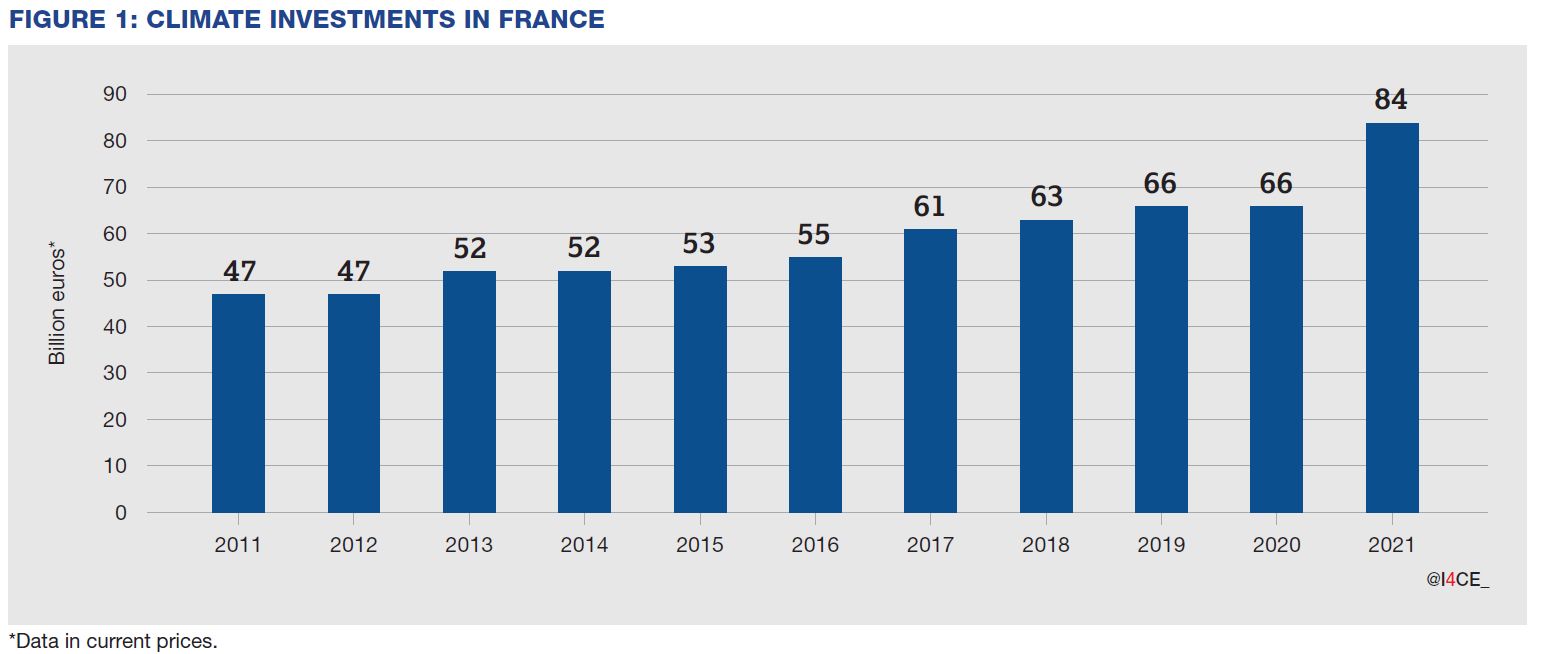Landscape of climate finance in France – 2022 edition
2022, France is paying dearly for a dependence on fossil fuels maintained by a chronic lack of investment in the decarbonisation of the economy. This edition of the Landscape of climate finance in France makes a detailed analysis of these critical expenditures by households, companies and public authorities, in the retrofitting of buildings, the purchase of electric vehicles, and renewable energies, as well as in rail, cycling and urban public transport infrastructures. Encouragingly, climate investments have increased significantly in the past year, driven, among other factors, by favourable regulations and by state support under the recovery plan. But this growth remains fragile, and analysis of several transition scenarios shows that climate investments need to increase further in order to stay on track to carbon neutrality and to ensure a lasting reduction in France’s dependence on fossil fuels.
Growth in climate investments is still fragile
Having weathered the health crisis, climate investments by households, companies and public authorities increased significantly to reach 84 billion euros in 2021, i.e 18 billion more than in 2020. They grew in most sectors, in particular in electric and hybrid vehicles, renewable energies, and retrofitting of buildings. This growth is explained by the delivery of projects postponed in 2020, but also by regulations, especially in the automotive sector, and by increased state support, in particular under the recovery plan.

However, the level reached in 2021 remains fragile. In the face of more expensive materials and a shortage of workers and expertise, households, companies and public authorities are increasingly struggling to undertake and to finance their climate investment projects. Moreover, the exceptionally high energy prices have suddenly deprived them of some of their financing capacities.
Further investments are needed to stay on track to meet climate targets
Despite significant growth, climate investments are still insufficient. Based on the ADEME “Transition(s) 2050” scenarios, we estimate the additional climate investments that would be needed in buildings, transport and energy production to get on track to carbon neutrality. They stand at between 14 billion euros per year for a frugal transition and up to 30 billion euros per year in a scenario in which technical progress maintains lifestyles. These are minimum amounts, which do not cover the requirements of agriculture, industry or adaptation to climate change.

The government is currently revising its climate strategy and will need to select one of these transition scenarios. But whichever scenario is chosen, it will imply investing more in low-carbon equipment and infrastructure, in particular to meet the new EU objective of reducing net greenhouse gas emissions to 55% below 1990 levels by 2030. With the funding under the recovery plan terminating at the end of this year, the public authorities will need to provide for long-term resources to continue to support households and companies. This will be one of the issues of the budget debate this autumn, then of the Loi de Programmation Energie-Climat (LPEC, energy and climate planning law), scheduled for summer 2023.
Fossil investments are declining, but could still rebound
Fossil investments have declined sharply since the health crisis, standing at 62 billion euros in 2021. This drop is primarily explained by the decrease in registrations of conventional vehicles, resulting from supply chain issues with semiconductors, but also from stricter regulations on vehicle emissions. To meet national targets, fossil investments still need to be halved by 2030.

However, fossil investments could still rebound. If the supply chain issues are resolved, more conventional vehicles could be registered. And if the energy crisis continues, it could lead to new investments in gas imports or in thermal power stations.
To avoid this rebound and to reduce France’s dependence on fossil fuels in the long term, climate investments must be accelerated without delay.
In this short two-minute video, Maxime Ledez of I4CE summarizes what you need to know about the 2022 edition of the Landscape of climate Finance in France, the evolution of climate and fossil fuel investments as well as France’s needs to reach carbon neutrality :


